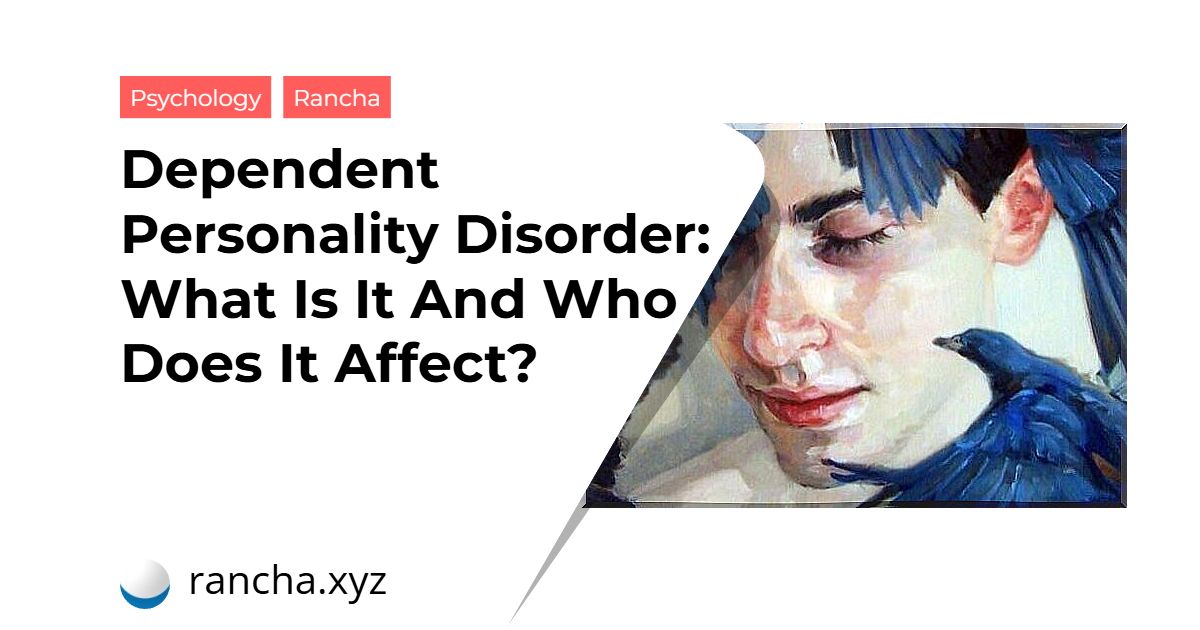The inability to be alone, a suffocating dependence on others, insecurity, no personal responsibility, the obsessive fear of being abandoned… These and other stressful dimensions characterize one of the most common illnesses, but in turn, less recognized and treated. We are talking about dependent personality disorder.
To understand a little more about this disorder we will start with a simple example. Jorge is 42 years old and today he has a job interview. In the morning, when he finishes dressing, his wife suggests that he put on another tie: the one he is wearing is very dark, very serious. Jorge doesn’t say anything, but he doesn’t feel good about the comment and is unsure. Soon after, he starts to wonder if the shirt and pants chosen match, if the shoes are suitable…
Tormented by doubts and fears, he tells himself he won’t get this job. Thus, without knowing how, he begins to intensify his negativity, sinking into a circular, repetitive and obsessive dialogue. You begin to imagine that if you don’t get the job, it’s very likely that your wife will leave you. His wife, who knows his personality well, says that won’t happen, that she is there to support him, that she trusts him and that there is no reason to fear abandonment.
He seems to perk up, but Eva, his wife, takes a deep breath, feeling once more the sting of despair. She knows she will have to support him by giving him encouragement and positive reinforcement throughout the day…maybe all week. You also know that Jorge will probably not be able to leave for that job interview. She also understands that her husband’s behavior is not normal, that it is sometimes very difficult to live with him, and that she feels more and more drained. She believes that this is her personality, and that these things cannot be changed.
This is where the root of the problem lies: believing that a certain type of behavior is normal and nothing can be done to change it. We associate these characteristics with a personality pattern and accept their behavior without understanding that, in fact, there is a disorder, a disease. A type of behavior that invalidates the person and the environment where he lives.

Dependent personality disorder or the fragility of the “I”
Among the 10 types of personality disorders collected by the DSM-V (Diagnostic and Statistical Manual of Mental Disorders), the most common disorder is dependent personality disorder. We are faced with a clinical condition that is characterized by a remarkable lack of self-confidence and the constant need for comfort, security and support. It usually has the first signs in adolescence, however, the symptoms are more severe and can be seen more clearly after 40 years of age.
On the other hand, as we suggested at the outset, it is very common for people with Dependent Personality Disorder to be unaware that what they are suffering from is an illness. Only when they reach the limit, when they realize they have no control over their reality and themselves, do they ask for help.
Characteristics of people with dependent personality disorder
- Inability to be alone.
- Avoidance of your responsibilities.
- Extreme passivity.
- Difficulty in accepting and facing criticism.
- Inability to assume the end of a relationship.
- Obsessive fear of being abandoned.
- They are very passive in interpersonal relationships.
- Lack of initiative : they cannot make decisions without support or advice from others.
What are the causes of the disorder and how is it diagnosed? Who can it affect?
To this day, the cause of this disorder is unknown. We know, for example, that it appears in adulthood and that some patients experienced in their childhood or adolescence an anxiety disorder associated with physical separation from their parents. However, this fact is not always decisive.

On the other hand, the estimated incidence of the disease in the general population is two percent (although it is known that many people are not always able to be diagnosed). It is also more common in women than in men. Usually, this diagnosis is made by a general practitioner who is almost always the first filter, the first step. They are the ones who refer these patients to specialized professionals.
First, a complete blood test is done to rule out any hormonal imbalance. Later, the symptoms and the patient’s life history will be analyzed.
Treatment for Dependent Personality Disorder
As always, in any condition, each patient is unique. Occasionally, more complications may occur, such as depression, anxiety disorders, avoidance personality disorder, etc., which further intensify the clinical picture.
However, it is worth emphasizing that the combination of psychotherapy and pharmacological treatment is effective in most cases. Cognitive behavioral therapy, for example, which focuses on thinking patterns, beliefs or the inability to make decisions, is one of the therapies with the best results.
We cannot forget that these are long-term treatments, therapies often combined with antidepressants or sedatives, with regular medical evaluation to analyze the improvements. Finally, we cannot forget the patient’s family and social support. The closest environment is the third pillar in any treatment, where the patient himself must combine continuous efforts, commitment and a clear desire to improve, to fight for his quality of life.
Images courtesy of MEGHAN HOWLAND.
 rancha.xyz Be free to choose their own route to self-knowledge, health and balance of body and soul.
rancha.xyz Be free to choose their own route to self-knowledge, health and balance of body and soul.




